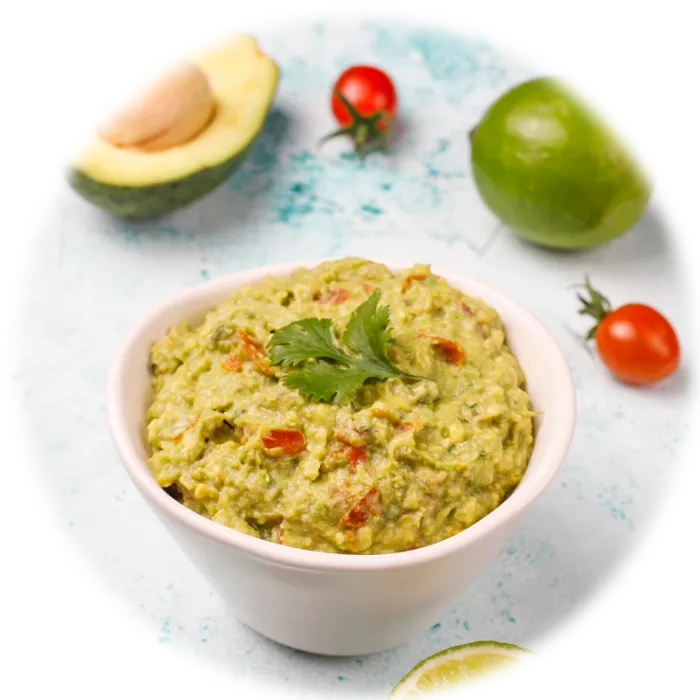
Nutritional properties of Guacamole
Energy :
160.00 Kcal / 100g
Category : Spices & Sauces
Group : Sauces
Composition And Nutritional Value :Guacamole is a popular Mexican dip made primarily from mashed avocados, along with other ingredients such as tomatoes, onions, cilantro, lime juice, and seasonings like salt and pepper. Avocados are the primary source of guacamole’s nutritional value, providing healthy monounsaturated fats, fiber, and a variety of vitamins and minerals, including potassium, vitamin E, and vitamin K. The addition of lime juice adds vitamin C, while tomatoes provide additional antioxidants like lycopene. Guacamole is low in carbohydrates but high in fats, making it a nutrient-dense, heart-healthy option when consumed in moderation.
Health Benefits : Guacamole offers numerous health benefits, especially due to its avocado content. The monounsaturated fats in avocados help lower bad cholesterol levels (LDL) and promote heart health. The fiber in guacamole aids digestion, supports weight management, and helps stabilize blood sugar levels. The antioxidants from tomatoes, cilantro, and lime juice also contribute to anti-inflammatory effects and immune system support. Additionally, guacamole is rich in potassium, which helps regulate blood pressure and maintain proper fluid balance in the body. It is also a good source of vitamin K, which is important for bone health.
Culinary Uses : Guacamole is most commonly used as a dip for tortilla chips, but it can also be served as a topping for tacos, burritos, and quesadillas, or spread on toast as part of a savory breakfast or snack. It pairs well with grilled meats, fish, and vegetables, offering a creamy texture and fresh flavor to complement these dishes. Guacamole is often added to salads, sandwiches, and wraps for an extra burst of flavor and healthy fats. Additionally, it is frequently used in combination with other Mexican dishes such as nachos or fajitas.
Types : While the basic version of guacamole is made with avocados, lime juice, and seasoning, there are many variations of the dish. Some versions include additional ingredients like garlic, jalapeños, or green chilies for extra heat. You might also find guacamole versions with diced fruits like mango or pineapple, adding a sweet twist to the traditional flavor. Other variations incorporate sour cream or Greek yogurt for a creamier texture, while some recipes use different herbs such as parsley or oregano in place of cilantro for a different flavor profile.
Shopping And Storage Tips : When shopping for avocados, choose ones that are firm but yield to gentle pressure, indicating they are ripe. If the avocados are not yet ripe, leave them at room temperature for a few days to ripen before making guacamole. Guacamole should be consumed soon after making it, as it tends to brown over time due to oxidation. To store leftovers, cover the guacamole with plastic wrap directly on the surface to minimize air contact, or add a layer of lime juice or olive oil to help preserve its color. It can be kept in the refrigerator for up to two days, though it’s best enjoyed fresh.
Vitamins / 100g ( µg )
Macronutrients / 100g ( µg )
Minerals / 100g ( µg )

